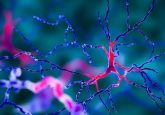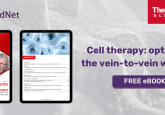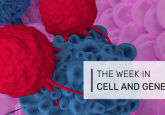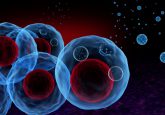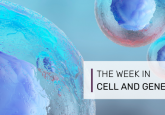Human induced pluripotent stem cell (iPSC)–based therapies: manufacturing challenges and enabling current and emerging applications
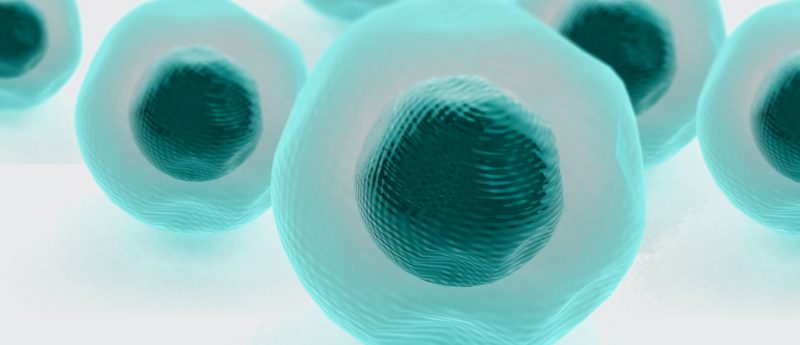
Introduction
The groundbreaking invention of reprogramming of human somatic cells into induced pluripotent stem cells (iPSCs) by Shinya Yamanaka 14 years ago [1] has ushered in a new era of cell and gene therapies and clinical paradigms. The promise of these potentially curative, iPSC-derived therapies has resulted in the initiation of multiple clinical trials with the goal of providing functional cells for the treatment of various diseases including:
- mesenchymal stem cells, for example Cynata Therapeutics’ (Melbourne, Australia) CYP-001 for the treatment of steroid-resistant acute graft-versus-host disease (GvHD) [2]
- dopaminergic progenitors for the treatment of Parkinson’s disease [3]
- natural killer (NK) cell-based cancer immunotherapy for the treatment of advanced solid tumors [4]
- retinal pigment epithelial cells for the treatment of age-related macular degeneration (AMD) [5]
- insulin secreting beta cells for the treatment of type I diabetes [6]
- human iPSC-based cancer immunotherapy [7]
Herein, we discuss the current challenges in this field and the future clinical potential of iPSCs.
Manufacturing challenges of autologous versus allogeneic iPSC-based therapies
Reprogramming technology supports the development of both autologous and allogeneic iPSC-based cell therapies. For autologous iPSC therapies, a patient’s somatic cells are harvested, for instance from a skin biopsy or blood sample, reprogrammed and differentiated into a therapeutic cell type. In contrast, an allogeneic iPSC-based therapy relies on starting from one donor to generate a large number of iPSCs, making one iPSC bank, that can be used in the treatment of many patient doses. In both of these instances, the manufacturing process is conceptually similar and comprised of somatic cell acquisition, cellular reprogramming, iPSC expansion and banking to generate a master/working cell bank followed by downstream directed differentiation to a therapeutically-relevant cell type. The methodology utilized through the various steps of this manufacturing process should be reproducible, efficient and compliant with cGMP requirements. Additionally, the implementation of appropriate assays for in-process and final release testing is critical in order to track the critical quality attributes (CQAs) of the product as it’s being manufactured and ready for release.
The manufacturing of iPSC-based cell therapies is complex and presents a hurdle in the generation of autologous or allogeneic iPSCs for clinical use. However, some of these challenges, in particular associated high costs, may be more pronounced for autologous applications due to requiring rigorous process and cell quality testing whose costs cannot be averaged over large product batches [8]. One of the challenges associated with iPSC-based therapies is the process of generating iPSCs from somatic cells. The choice of the cellular reprogramming method can highly affect the time and labor that is required from cellular reprogramming to cryobanking.
Non-integrating DNA-based reprogramming methods, such as episomal-based methods [9,10], have a high reprogramming efficiency, and success with various somatic cell types, but requires serially sub-culture of the cells for extended time until vector clearance is achieved. In contrast, mRNA-based reprogramming is considered a zero-footprint method, as the exogenous mRNA sequences that are transfected to the cells have a relatively short half-life and cannot integrate into the genome of the transfected cells. One major limitation of this method is that it has only been successful with adherent cell types, which are challenging to acquire for clinical applications due to practical and technical considerations [11].
Additionally, another limitation of mRNA -based reprogramming is the need for multiple transfection cycles that demands more hands-on time, which can become a cGMP manufacturing constraint and increase the risk of executing a successful process. Irrespective of the reprogramming method, besides improving the reprogramming efficiency potentially using different enhancers, the introduction of automation throughout the manufacturing process may be a solution to address the transfection challenges and labor intensive iPSC selection, passaging and expansion processes. This could potentially increase reproducibility and reduce the costs of iPSC manufacturing.
Another challenge for iPSC-based therapies is the efficiency and robustness of tightly controlled directed differentiation processes. These directed differentiation processes are typically developed around a limited number of clonal iPSC lines and would need to be re-optimized for new lines. This means the quality of iPSCs alone, while important, would not be sufficient to predict the outcome of the directed differentiation process. In this regard, it is time-effective, less risky and cost-effective to develop an allogeneic iPSC-derived therapy, where the performance can be projected after optimization is completed with one clonal line.
For an autologous iPSC therapy, the differentiation process will need to be re-optimized to ensure that a reproducible, reliable and safe manufacturing process can be developed. This optimization will increase the time and cost to deliver this therapy to the patient, and could result in a cost-prohibitive therapy. Unlike autologous cell therapy, allogeneic iPSC-based therapies can provide an “off-the-shelf” solution, where there is a consistent, timely and quality-assured product with a lower overall cost per dose.
One consideration for the development of allogeneic iPSC-based therapies is that for disease indications where the administration site is not immune-privileged, immunosuppressants cannot be administered or the iPSC-derived cells cannot be contained in an immunoprotective biomaterial, an HLA-matched or HLA-knockout iPSC could reduce the transplantation risks/complications. Recently, CRISPR-Cas9 editing was used to knockout the major histocompatibility complex (MHC) protein encoding genes in pluripotent stem cells, resulting in cells that were not rejected by the host’s immune system [12].
Clinical vs. commercial manufacturing of the iPSC-based therapies
For early-phase clinical trials, a small number of patients are dosed to evaluate safety and efficacy, and rely on a low number of doses that may easily be generated in small-scale. As an example, if it is assumed that 109 cells would be required per patient in heart failure, and 2×106 cardiomyocytes/mL can be generated in a suspension-based culture, then one patient could be treated with one 1 L spinner flask, with samples for QC/release testing. To treat ten patients, it is feasible to develop a clinical manufacturing process that could consist of up to ten 1 L spinner flasks.
However, to transition to commercial manufacturing needs, the small-scale manufacturing process described would not satisfy a Phase III clinical trial and market demands for hundreds or thousands of patients. In this case, a large-scale, computer-controlled 3D bioreactor-based manufacturing process would need to be developed that can reduce the labor and manufacturing footprint, enable process monitoring and control of critical process parameters (CPPs) resulting in a more homogenous cell culture. In addition, when initiating a commercial manufacturing process, it is important to have a good understanding of the CPPs and their impact on the CQAs of the final therapeutic product. Based on the relationship between the CPPs and CQAs, a failure mode and affects analysis (FMEA) risk assessment is then performed to identity the modes of failure, risks and mitigations as well as a control strategy for the manufacturing process and establish the design space for the process performance qualification (PPQ) campaign. As allogeneic processes are scaled-up from clinical to commercial manufacturing, economies-of-scale can be taken advantage of and thereby result in a lower overall cost per dose at the commercial scale compared to the clinical scale.
Approaches for reduction of the cost of iPSC-based treatments
Even with cost averaging for large drug product batches, the price of iPSC-based therapies could be quite cost-prohibitive due to many factors that include: single vendor-supplied specialty reagents, the need for highly skilled technicians during the entire process, suite utilization time associated with long manufacturing process, and batch failure due to variable efficiencies from non-robust differentiation protocols. Lonza has been actively involved in implementing strategies to minimize the cost of iPSC-based therapies by tackling each of these issues with cGMP compatible solutions. As we transition from conventional, 2D cell culture systems to space-efficient, closed 3D computer-controlled suspension cultures, we focus on incorporating automated methods and control of our CPPs to enable the generation of more consistently produced iPSCs and their derivatives [13].
Additionally, the closure of cell culture processing decreases the risk of contamination and could enable the product to be manufactured in a lower-class suite, for example a Grade C vs A cleanroom, thus reducing operational costs. Along with transitioning cultures to 3D suspension-based processes, it is important to develop an optimized and robust process that is cost-effective and can perform reproducibly in manufacturing. In this regard, we have recently developed a scalable process to generate high-density, quality-assured iPSCs in a closed, perfusion-enabled, computer-controlled bioreactor that can also be directly inoculated from thaw.
After expansion, the cells can be harvested and concentrated in a closed manner, and utilized for subsequent processing steps, such as banking, expansion or directed differentiation [14]. This iPSC manufacturing process enables the elimination of the seed train, leading to reduced process time, and this reduction in labor drives down the overall cost of the final drug product. In addition to this, the implementation of a process analytical technology (PAT) strategy to measure and control key environmental and cell culture components, can result in lower media usage, through metabolite-dependent media replacement/addition, and increased process robustness/reproducibility, such as measurement and control of differentiation-related factors.
Emerging iPSC-derived technologies
The differentiation ability of iPSCs has been one of the primary drivers in the cell and gene therapy field. However, there are a number of emerging areas that may expand on the unlimited potential of iPSCs. These areas include: 1) iPSC-based vaccines, 2) iPSC-derived exosomes and 3) organoid-generation for drug testing. Firstly, based on the observation that iPSCs and cancer cells share a number of cellular and molecular properties, it is reported that inactivated iPSCs can elicit an immune response through the expression of similar surface antigens [15]. Additionally, it was observed that the effect of this ‘iPSC-derived vaccine’ could be transferred from one ‘inoculated’ mouse to a diseased mouse, with sustained anti-tumor effects [16].
Secondly, exosomes are small membrane-bound extracellular vesicles that are released by cells and have been shown to have therapeutic potential. Additionally, these exosomes can be loaded for drug delivery, for example with proteins or small interfering RNA, to increase their therapeutic efficacy. iPSCs-derived vesicles have been shown to have a positive therapeutic effect when applied to cultured cells [17]. Moreover, as iPSCs differentiate into more mature cell types, the properties of these vesicles can change and have differing, therapeutic properties when applied in vivo [17]. Finally, the derivation of donor-matched organoids, from a single iPSC line, can have large implications for understanding drug interactions/metabolism with different populations/patients. This can result in optimally titrated drug doses, as well as enable personalized medical interventions.
The discovery of iPSCs has profoundly influenced the field of cell and gene therapy; however, the full potential of iPSCs has yet to be realized. The use of scalable, automated, closed cell culture systems as well as the development of universal, non-immunogeneic iPSC banks would support the standardization of large-scale, allogeneic manufacturing platforms for the cost-effective generation of large batches of therapeutic cells. Additionally, emerging iPSC-based technologies support the great potential of these cells to move beyond the current focus on cell-replacement therapies.
Find out more about Lonza Cell and Gene Technologies>>
